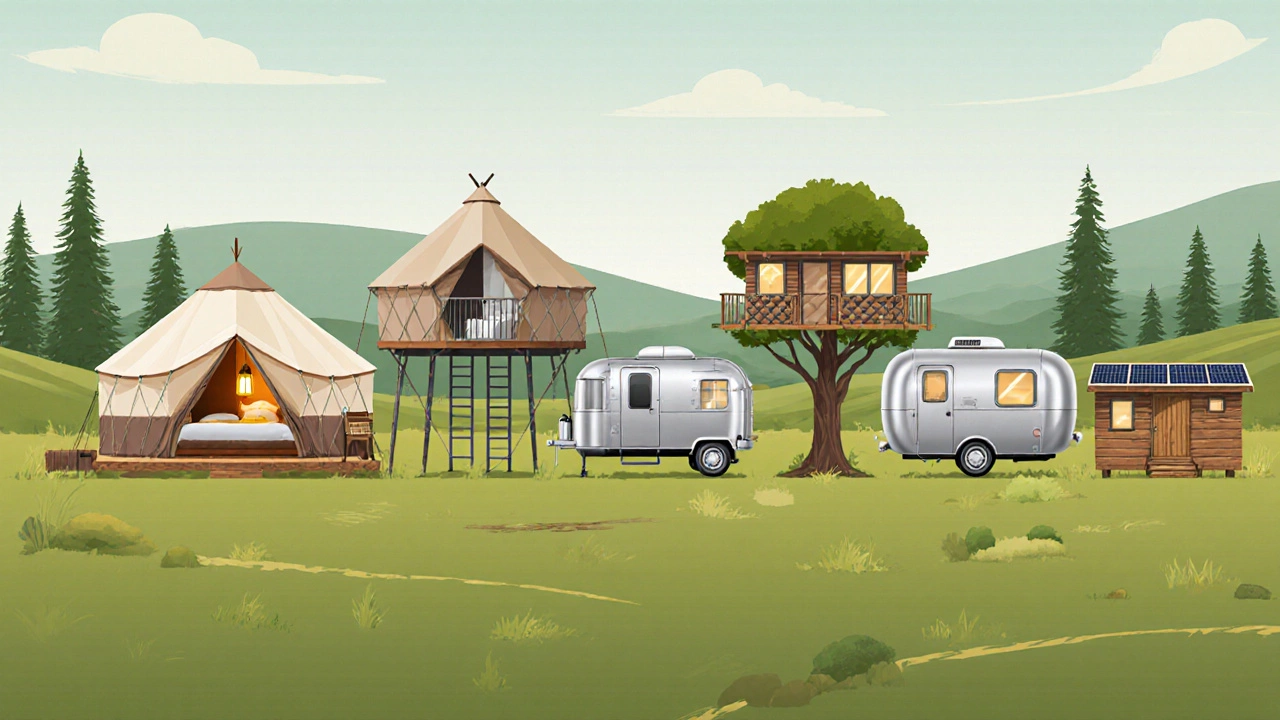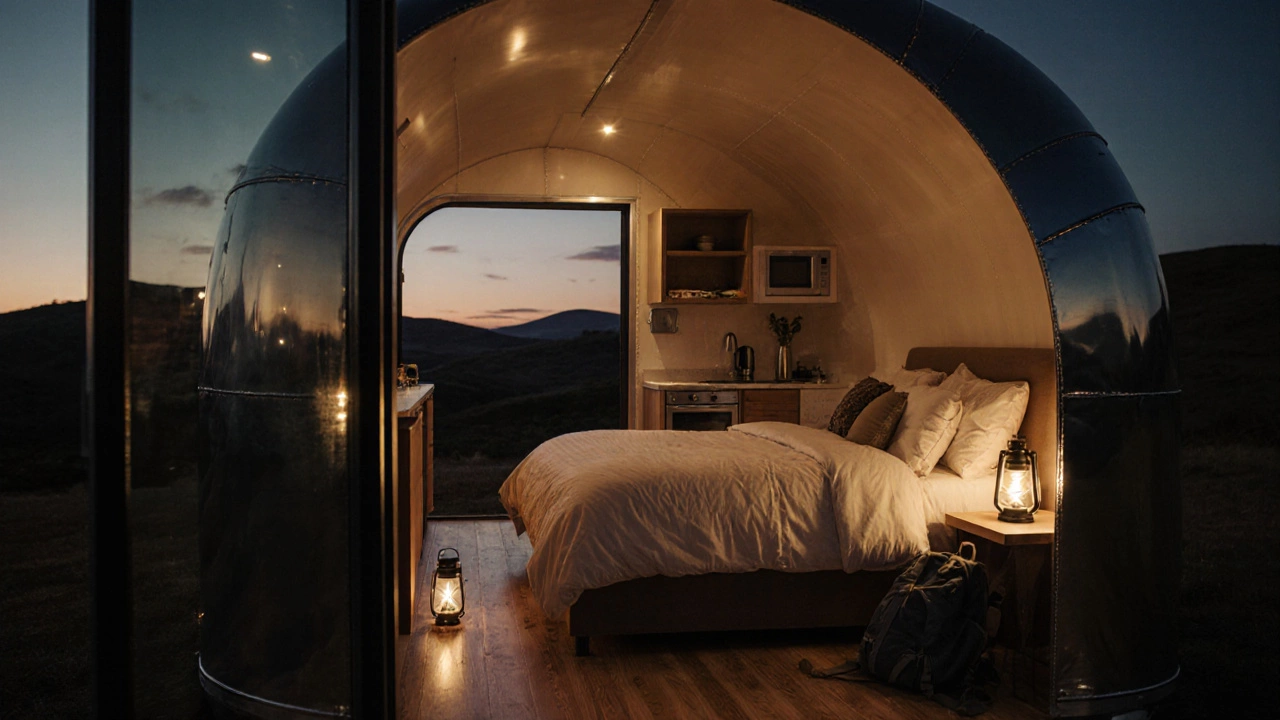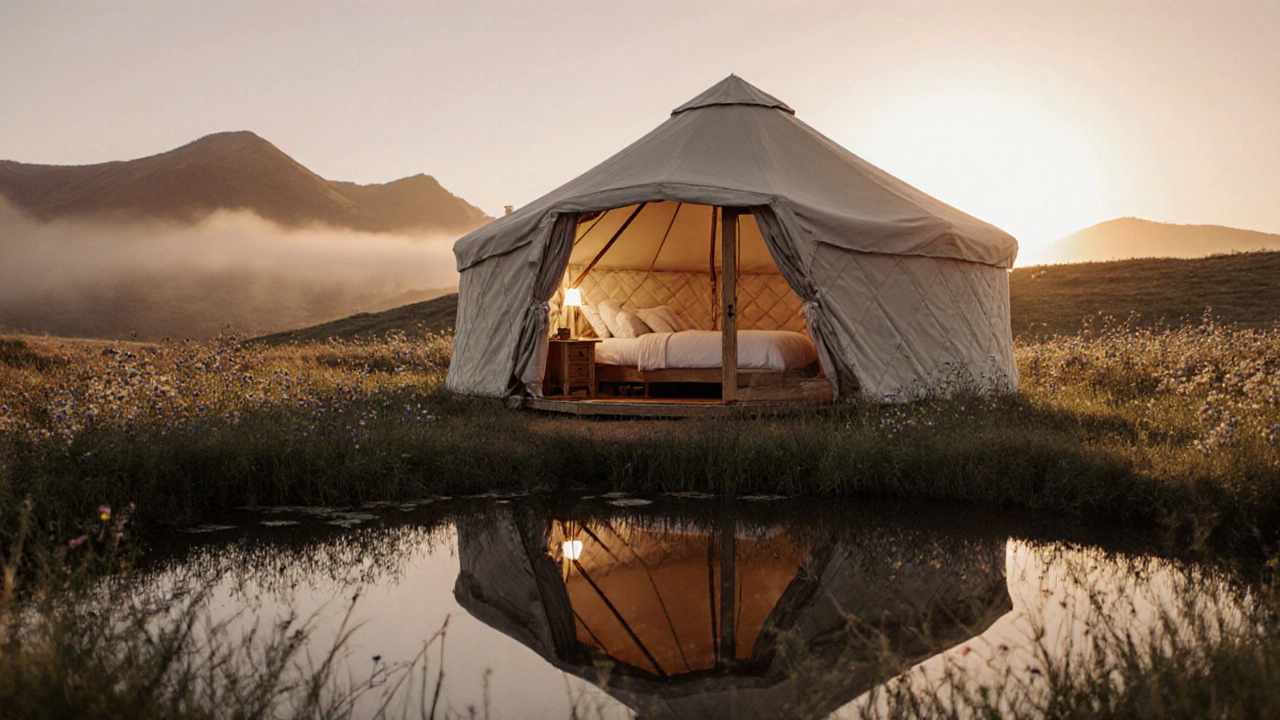Glamping Cost Estimator
Estimate your glamping trip costs based on accommodation type, duration, and optional add-ons. This tool uses typical UK pricing ranges from the article.
Quick Takeaways
- Glamping blends outdoor adventure with hotel‑level comfort.
- Typical formats include yurts, safari tents, treehouses and Airstream pods.
- Nightly rates in the UK range from €80 to €300+ depending on style and location.
- Key amenities: real beds, electricity, private washrooms, often on‑site dining.
- Plan early, check weather, and pack light - the experience is about ease, not bulk.
What Is Glamping?
When you hear the buzzword glamping, think of a weekend in nature that feels more like a boutique hotel than a tent‑in‑the‑woods. Glamping is a portmanteau of “glamorous” and “camping,” offering upscale accommodations while still letting you soak up the outdoors. The trend took off in the early 2000s, first in the United States and Europe, and now dozens of UK sites market themselves as glamping destinations.
Core Features That Make It Fancy
Unlike traditional camping, glamping swaps the sleeping bag for a queen‑size bed, the fire‑pit for a heated lounge, and the scramble for a bathroom for a private ensuite. Common upscale touches include:
- High‑quality linens and mattresses.
- Electricity, Wi‑Fi and sometimes air‑conditioning.
- En‑suite bathrooms with hot showers.
- On‑site chefs, farm‑to‑table meals or gourmet picnics.
- Unique designs - think timber frames, glass walls, and sustainable materials.

Popular Glamping Formats
Glamping isn’t one‑size‑fits‑all. Operators play with different structures to create memorable stays. Below is a snapshot of the most common formats, their key attributes and typical price bands in the UK.
| Style | Typical Size | Key Amenities | Average Nightly Rate (€) |
|---|---|---|---|
| Yurt | 30‑45m² | Wooden floor, heating, private bathroom | 120‑200 |
| Safari Tent | 25‑35m² | Canvas walls, sturdy frame, en‑suite | 100‑180 |
| Treehouse | 20‑30m² | Elevated platform, balcony, basic bathroom | 150‑250 |
| Airstream Pod | 15‑20m² | Metal shell, full kitchen, composting toilet | 130‑220 |
| Eco‑Lodge | 40‑60m² | Solar power, rainwater collection, spa bath | 200‑350 |
Cost Snapshot: What You’re Paying For
Glamping prices vary widely based on location, season and the level of service. A weekend in a basic safari tent in the Lake District might cost €180 total, while a five‑star eco‑lodge in County Kerry can exceed €1,200 for the same period. Most sites bundle the following into the nightly rate:
- Accommodation and furniture
- Electricity and heating
- Linens, towels and toiletries
- Access to shared facilities (pool, sauna, communal kitchen)
- Optional meals or breakfast packages
Travelers often save by booking mid‑week stays, traveling off‑peak, or opting for self‑catering setups.
Top Glamping Spots in the UK & Ireland
If you’re based in Dublin or elsewhere in the British Isles, you have plenty of options within a few hours’ drive:
- Lake District, England - Yurts and lakeside cabins with panoramic water views.
- Snowdonia, Wales - Treehouses perched on forest ridges, perfect for hiking.
- Peak District, England - Safari tents near historic villages, many with farm‑to‑table breakfasts.
- Cork, Ireland - Eco‑lodges on organic farms, offering guided foraging tours.
- Scottish Highlands - Airstream pods set against rugged mountains, often paired with whisky tasting.
Many sites are members of the UK Glamping Association, which guarantees a minimum quality standard.

Planning Your First Glamping Trip
Even though glamping feels effortless, a bit of preparation keeps the experience smooth. Follow this simple roadmap:
- Choose a style that matches your comfort level - yurt for spaciousness, safari tent for classic charm.
- Check the site’s amenities list; confirm whether linens, meals or Wi‑Fi are included.
- Book at least 4weeks ahead during summer months; off‑season slots open up closer to the date.
- Pack lightweight clothing, a reusable water bottle and a portable power bank - you won’t need a bulky camping kit.
- Review the cancellation policy; most glamping sites offer flexible refunds up to 48hours before arrival.
Most operators provide a welcome pack with local maps, activity suggestions and contact numbers, so you can focus on relaxing.
Pros & Cons of Glamping
Like any travel style, glamping has its highs and lows. Here’s a balanced view:
| Pros | Cons |
|---|---|
| Comfortable beds and real bathrooms. | Higher price than traditional campsites. |
| Unique designs create memorable stays. | Limited availability in peak season. |
| Often located in pristine natural settings. | May still involve outdoor elements like insects. |
| On‑site activities (hiking, yoga, workshops). | Less flexibility for spontaneous moves. |
Checklist Before You Go
- Confirm reservation details and arrival time.
- Verify what’s included: linens, meals, Wi‑Fi.
- Pack weather‑appropriate clothing; layers work best.
- Bring a reusable mug, a good book and a flashlight.
- Charge phone and power bank; most sites have outlets.
- Check transport options - some glamping sites offer shuttle service.
Frequently Asked Questions
Is glamping suitable for families with kids?
Absolutely. Many sites provide child‑friendly amenities such as playgrounds, high chairs and family‑size tents. The comfort of real beds means parents get a good night’s sleep too.
Do I need to bring my own sleeping gear?
No. Glamping accommodations come fully furnished with mattresses, pillows and blankets. You only need personal items like toiletries and a light jacket.
Can I cook my own meals?
Most glamping sites offer a communal kitchen or a small kitchenette inside the unit. If you prefer a full‑service experience, many also provide chef‑prepared meals on request.
Is glamping eco‑friendly?
Many operators adopt sustainable practices - solar power, rainwater harvesting and locally sourced materials. Look for certifications from the UK Glamping Association or similar bodies.
What’s the best time of year for glamping in the UK?
Late spring (May‑June) and early autumn (September‑October) offer mild weather, fewer crowds and lower rates. Summer is popular but book early and expect higher prices.
